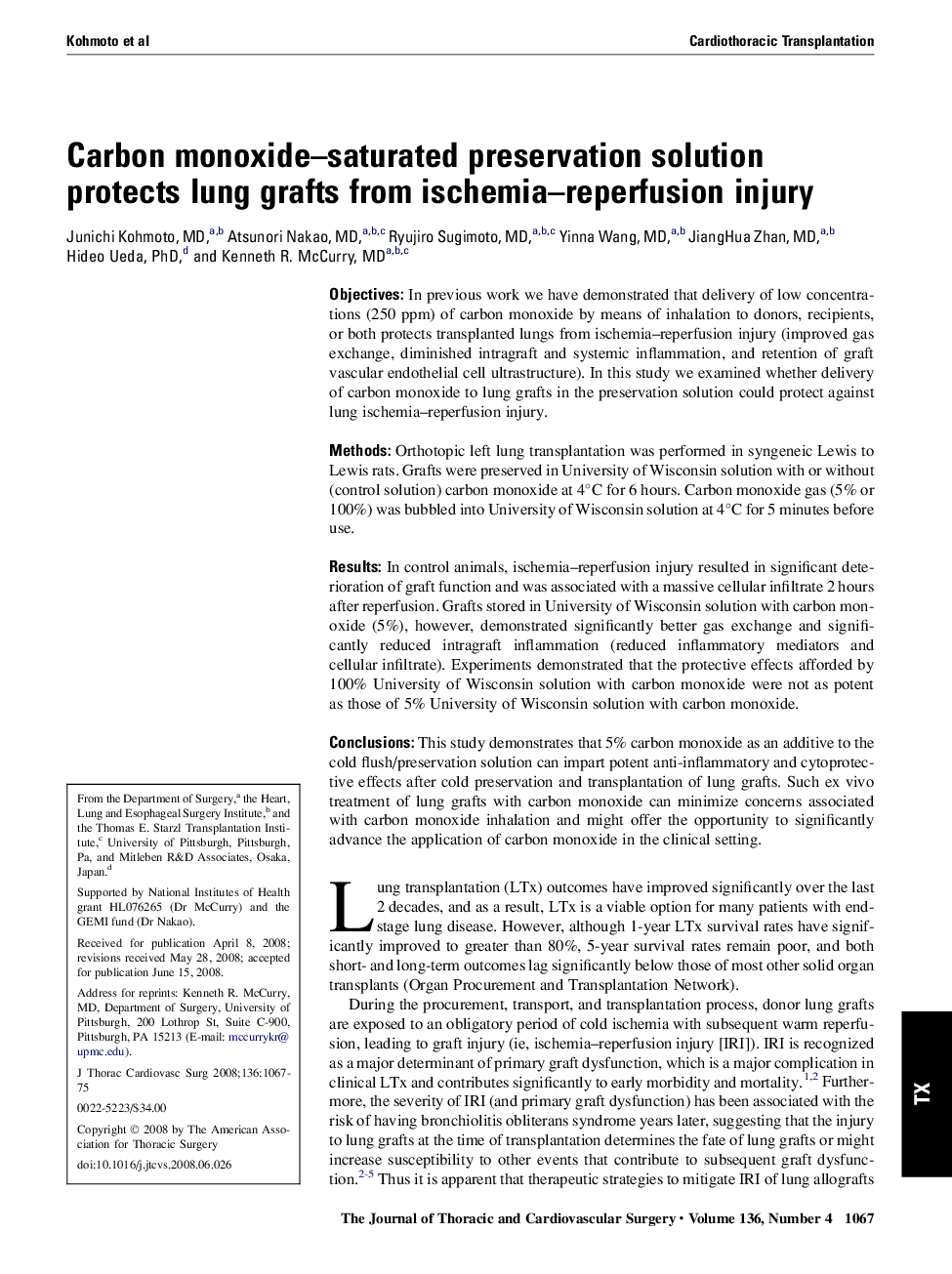| Article ID | Journal | Published Year | Pages | File Type |
|---|---|---|---|---|
| 2982814 | The Journal of Thoracic and Cardiovascular Surgery | 2008 | 9 Pages |
ObjectivesIn previous work we have demonstrated that delivery of low concentrations (250 ppm) of carbon monoxide by means of inhalation to donors, recipients, or both protects transplanted lungs from ischemia–reperfusion injury (improved gas exchange, diminished intragraft and systemic inflammation, and retention of graft vascular endothelial cell ultrastructure). In this study we examined whether delivery of carbon monoxide to lung grafts in the preservation solution could protect against lung ischemia–reperfusion injury.MethodsOrthotopic left lung transplantation was performed in syngeneic Lewis to Lewis rats. Grafts were preserved in University of Wisconsin solution with or without (control solution) carbon monoxide at 4°C for 6 hours. Carbon monoxide gas (5% or 100%) was bubbled into University of Wisconsin solution at 4°C for 5 minutes before use.ResultsIn control animals, ischemia–reperfusion injury resulted in significant deterioration of graft function and was associated with a massive cellular infiltrate 2 hours after reperfusion. Grafts stored in University of Wisconsin solution with carbon monoxide (5%), however, demonstrated significantly better gas exchange and significantly reduced intragraft inflammation (reduced inflammatory mediators and cellular infiltrate). Experiments demonstrated that the protective effects afforded by 100% University of Wisconsin solution with carbon monoxide were not as potent as those of 5% University of Wisconsin solution with carbon monoxide.ConclusionsThis study demonstrates that 5% carbon monoxide as an additive to the cold flush/preservation solution can impart potent anti-inflammatory and cytoprotective effects after cold preservation and transplantation of lung grafts. Such ex vivo treatment of lung grafts with carbon monoxide can minimize concerns associated with carbon monoxide inhalation and might offer the opportunity to significantly advance the application of carbon monoxide in the clinical setting.
